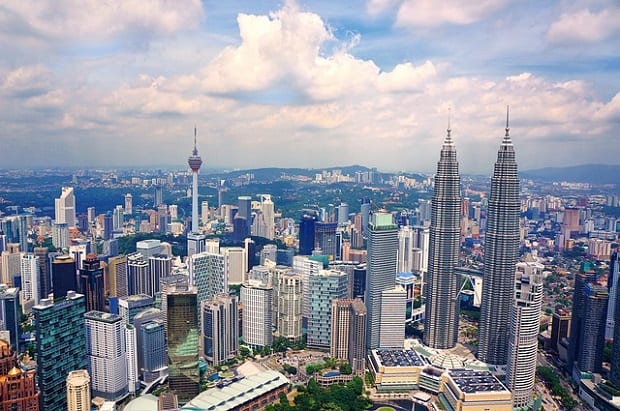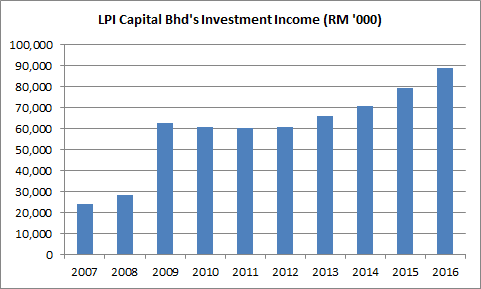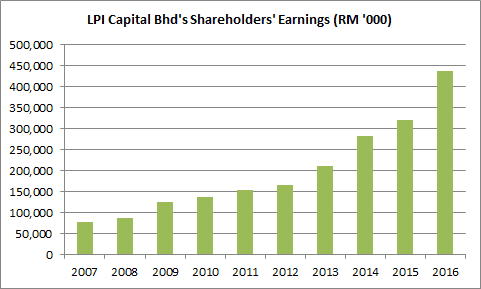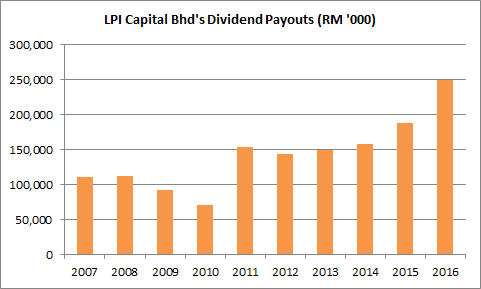

Perhaps, if you’re reading this, you’ve already bought several insurance policies. Individually, these policies include a medical card and multiple life insurance products. If you have a car, you would’ve bought motor insurance. If you are a property owner, you would’ve purchased multiple insurance products to insure damages against fire, theft and natural disasters. Hopefully, we won’t need to use them.
If so, why do we pay our insurance bills year after year without fail? The answer is: Peace of mind.
It is to have some sense of security and compensation if we face certain losses arising from an unfortunate event or events. The sum recovered is not a personal gain. Rather, it allows us to move forward with life without suffering a major financial setback.
In this article, I’ll write about LPI Capital Berhad (KLSE: 8621). Presently, it is one of the leading general insurance companies in Malaysia. I’ve dissected its accounts and read its annual reports to bring you a detailed look at the success and achievements of the insurer.
Here are the 7 things you need to know about LPI Capital:
1. LPI Capital Bhd has achieved CAGR of 12.23% in operating revenues over the last 10 years. It has increased from RM434.76 million in 2006 to RM1.38 billion in 2016. This is due to continuous growth in gross written premium (GWP) of its fire and motor insurance products during the period.


Source: Annual Reports of LPI Capital Bhd
2. There are three main reasons that have driven sales growth for LPI Capital Bhd.
- Firstly, we have more cars manufactured over the past 10 years. According to the Malaysian Automotive Association (MAA), the amount of new vehicles registered in Malaysia has grown from 490,768 in 2006 to 580,124 in 2016. It has boosted demand for motor insurance products in Malaysia.
- Secondly, we have more property transactions in Malaysia over the last 10 years. According to the National Property Information Centre (NAPIC) of Malaysia, the amount of property transacted has grown from 283,900 in 2006 to 362,110 in 2015. This has contributed to growth in value of property transactions from RM61.60 billion in 2006 to RM149.90 billion in 2016. It has increased demand for fire insurance products in Malaysia.
- Thirdly, LPI Capital Bhd has embarked on a more aggressive recruitment drive. In 2007, it had 1,068 agents. By 2016, the number of agents has increased to 2,244 agents. As a result, LPI Capital Bhd has recorded increasing issuance of new insurance policies, up from 879,865 in 2007 to 1,787,180 in 2016.
3. LPI Capital Bhd has achieved CAGR of 13.77% in investment-related income over the last 10 years. It has increased from RM24.47 million in 2006 to RM88.87 million in 2016. This is important as it is common for insurers to derive substantial profits from their investment assets.


Source: Annual Reports of LPI Capital Bhd
There are three things we need to know about its investment income.
- Firstly, LPI Capital Bhd derives bulk of its investment income from dividend and interest income from its investment assets. The growth in investment income is due to growth in LPI Capital Bhd’s investment assets, up from RM999.47 million in 2006 to RM2.39 billion in 2016.
- Secondly, LPI Capital Bhd derived bulk of its dividend income from its investment in Public Bank Bhd. As at January 27, 2017, it has 42.52 Million shares or 1.10% shareholdings of Public Bank Bhd worth RM862 million. At present, LPI Capital Bhd is the ninth largest shareholder of Public Bank Bhd.
- Thirdly, LPI Capital Bhd has reported to have RM1.26 billion in loans & receivables excluding insurance receivables in 2016. From which, RM1.12 billion comprises of fixed deposits with maturity more than three months.
4. LPI Capital Bhd has achieved a CAGR of 19.33% in shareholders’ earnings over the last 10 years. It has increased from RM74.70 million in 2006 to RM437.22 million in 2016. This is contributed by continuous growth in operating revenues, investment income and operating margins. LPI Capital Bhd has improved its operating margins from 23.0% in 2006 to 37.5% in 2016.


Source: Annual Reports of LPI Capital Bhd
5. LPI Capital Bhd has achieved a nine-year return on equity (ROE) average of 15.24% per annum. This means, LPI Capital Bhd has made, on average, RM15.24 in annual earnings from every RM100 in shareholders’ equity over the last nine years. ROE for 2007 was excluded from the calculation of LPI Capital Bhd’s average ROE.
But why nine years and not 10? This is because LPI Capital Bhd adopted FRS 139 which changed the classification & measurement of financial assets. This has resulted in substantial growth in shareholders’ equity in 2009. The 2008 shareholders’ equity was restated. Thus, 2008 is the first year of ROE calculated to reflect the adoption of FRS 139.
6. LPI Capital Bhd has achieved CAGR of 12.81% in annual dividend payouts over the last 10 years. It has increased from RM74.57 million in 2006 to RM248.99 million in 2016.The dividend payout ratio (DPR) was lower at 70.82% from 2012 to 2016 compared to DPR of 103.78% per annum from 2007 to 2011 This is because LPI Capital Bhd’s growth in shareholders’ earnings have outpaced its growth in paying out dividends to shareholders over the last five years.


Source: Annual Reports of LPI Capital Bhd
7. LPI Capital Bhd anticipates an increase level of competition in the insurance industry. This is due to the commencement of the phased liberalisation of motor and fire insurance coverage starting on 1 July 2016.Under this liberalisation, prices of these classes of insurance will now be determined by each individual insurer instead of being regulated by a tariff structure.
The commencement of the next phase of the liberalisation plan is scheduled to begin on 1 July 2017. The board of LPI Capital Bhd expects some compression in margins. Thus, to offset this impact, LPI Capital Bhd is developing new specialty products and would be leveraging on its Business Process Management (BPM) system to optimise efficiency.
Despite challenges anticipated in 2017, LPI Capital Bhd has expressed its confidence as it has a healthy financial position and commendable Capital Adequacy Ratio (CAR) which is above the 130% minimum set by Bank Negara Malaysia. Moving forward, LPI Capital Bhd is committed to maintain its position as one of the most established and well-managed insurers in Malaysia and to deliver long-term economic value to its shareholders.
Read more: The one ratio to use when valuing an insurance stock



